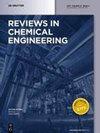Strategies adopted for the preparation of sodium alginate–based nanocomposites and their role as catalytic, antibacterial, and antifungal agents
IF 6.6
3区 工程技术
Q1 ENGINEERING, CHEMICAL
引用次数: 2
Abstract
Abstract Alginate extracted from the marine brown algae is a massively utilized biopolymer in multiple fields such as microreactors for the fabrication of metal nanoparticles along with other polymeric and nonpolymeric materials to enhance their mechanical strength. These sodium alginate (Na-Alg)-based fabricated nanocomposites find applications in the field of catalysis and biological treatment as antibacterial/antifungal agent due to the synergistic properties of Na-Alg and fabricated metal nanoparticles (NPs). Na-Alg offers mechanical strength and nanoparticles provide high reactivity due to their small size. Sodium alginate exhibits hydroxyl and carboxylate functional groups that can easily interact with the metal nanoparticles to form composite particles. The research on the preparation of Na-Alg–based nanoparticles and nanoaggregates have been started recently but developed quickly due to their extensive applications in different fields. This review article encircles different methods of preparation of sodium alginate–based metal nanocomposites; analytical techniques reported to monitor the formation of these nanocomposites and used to characterize these nanocomposites as well as applications of these nanocomposites as catalyst, antibacterial, and antifungal agent.制备海藻酸钠基纳米复合材料的策略及其作为催化、抗菌和抗真菌剂的作用
摘要从海洋褐藻中提取的海藻酸盐是一种在多个领域广泛使用的生物聚合物,如用于制造金属纳米颗粒的微反应器以及其他聚合物和非聚合物材料,以提高其机械强度。由于Na-Alg和所制备的金属纳米颗粒(NP)的协同性能,这些基于藻酸钠(Na-Alg)的纳米复合材料在催化和生物处理领域作为抗菌/抗真菌剂得到了应用。Na-Alg提供机械强度,纳米颗粒由于其小尺寸而提供高反应性。藻酸钠具有羟基和羧酸盐官能团,可以很容易地与金属纳米颗粒相互作用形成复合颗粒。Na-Alg基纳米颗粒和纳米聚集体的制备研究最近才开始,但由于其在不同领域的广泛应用,发展迅速。本文综述了海藻酸钠基金属纳米复合材料的不同制备方法;据报道,分析技术可以监测这些纳米复合材料的形成,并用于表征这些纳米复合物,以及这些纳米复合物质作为催化剂、抗菌剂和抗真菌剂的应用。
本文章由计算机程序翻译,如有差异,请以英文原文为准。
求助全文
约1分钟内获得全文
求助全文
来源期刊

Reviews in Chemical Engineering
工程技术-工程:化工
CiteScore
12.30
自引率
0.00%
发文量
37
审稿时长
6 months
期刊介绍:
Reviews in Chemical Engineering publishes authoritative review articles on all aspects of the broad field of chemical engineering and applied chemistry. Its aim is to develop new insights and understanding and to promote interest and research activity in chemical engineering, as well as the application of new developments in these areas. The bimonthly journal publishes peer-reviewed articles by leading chemical engineers, applied scientists and mathematicians. The broad interest today in solutions through chemistry to some of the world’s most challenging problems ensures that Reviews in Chemical Engineering will play a significant role in the growth of the field as a whole.
 求助内容:
求助内容: 应助结果提醒方式:
应助结果提醒方式:


